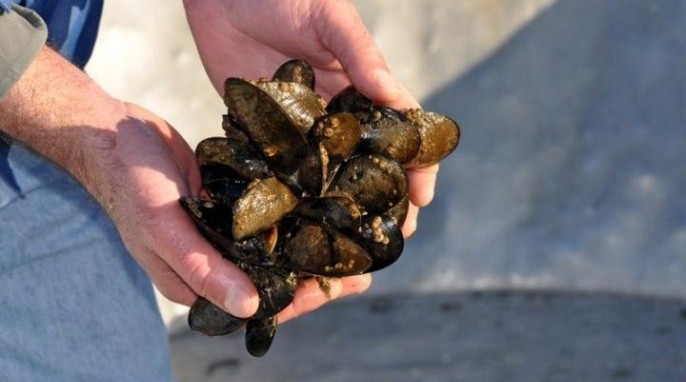Ocean acidification is killing young oysters, clams, and mussels in U.S. coastal regions that depend on these shellfish. Find out why.
By Kate Stone
Coastal communities in fifteen U.S. states that depend on the $1 billion shellfish industry (primarily oysters and clams) are in trouble. The shellfish supplies in these areas are at risk from the increasing threat of ocean acidification, according to a new study from Oregon State University.
Previously, the Pacific Northwest was most frequently cited as the region with vulnerable shellfish populations, say the researchers. Now they have identified many more coastal areas where the problem exists, ranging from Chesapeake Bay to the bayous of Louisiana.
“Ocean acidification has already cost the oyster industry in the Pacific Northwest nearly $110 million and jeopardized about 3,200 jobs,” says Julie Ekstrom of the University of California at Davis.
George Waldbusser, an Oregon State University marine ecologist and biogeochemist, says that the spreading impact of ocean acidification is due mainly to increases in greenhouse gases. Carbon dioxide is killing off young shellfish at an alarming rate.
“This clearly illustrates the vulnerability of communities dependent on shellfish to ocean acidification,” Waldbusser explains. “Ultimately…we will be stuck with a much larger long-term problem.”
Ocean Acidification “Hot Zones”
The research team identified several “hot zones” in the coastal United States that are in particular danger. These include:
- The Pacific Northwest: Oregon and Washington coasts and estuaries have cold waters, upwelling currents that bring corrosive waters closer to the surface, corrosive rivers, and nutrient pollution from land runoff;
- New England: The product ports of Maine and southern New Hampshire feature rivers that run into cold New England waters, which are full of acidifying carbon dioxide;
- Mid-Atlantic: East coast estuaries including Narragansett Bay, Chesapeake Bay, and Long Island Sound have nitrogen pollution, which exacerbates ocean acidification in waters that are shellfish-rich;
- Gulf of Mexico: Terrebonne and Plaquemines Parishes of Louisiana, and other communities in the region, have shellfish economies based almost entirely on oysters, giving this region fewer options for alternative – and possibly more resilient – mollusk fisheries.
“The power of this project is the collaboration of natural and social scientists focused on a problem that has and will continue to impact industries dependent on the sea,” Waldbusser says.
RELATED: A Two-way Interaction: Ocean and Climate
This research is published in the journal Nature Climate Change and was funded by the National Science Foundation’s National Socio-Environmental Synthesis Center.
Image courtesy of Oregon State University




